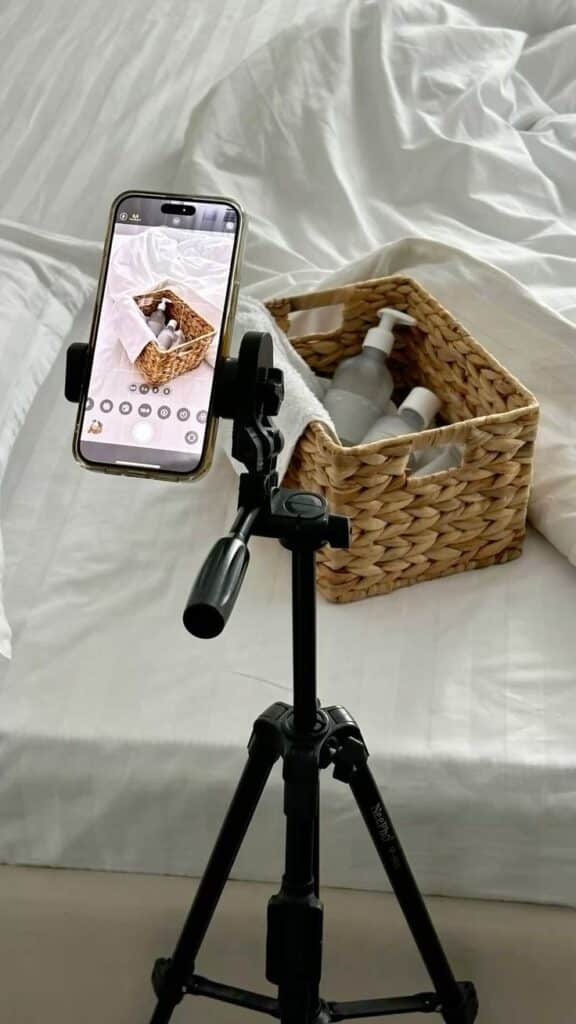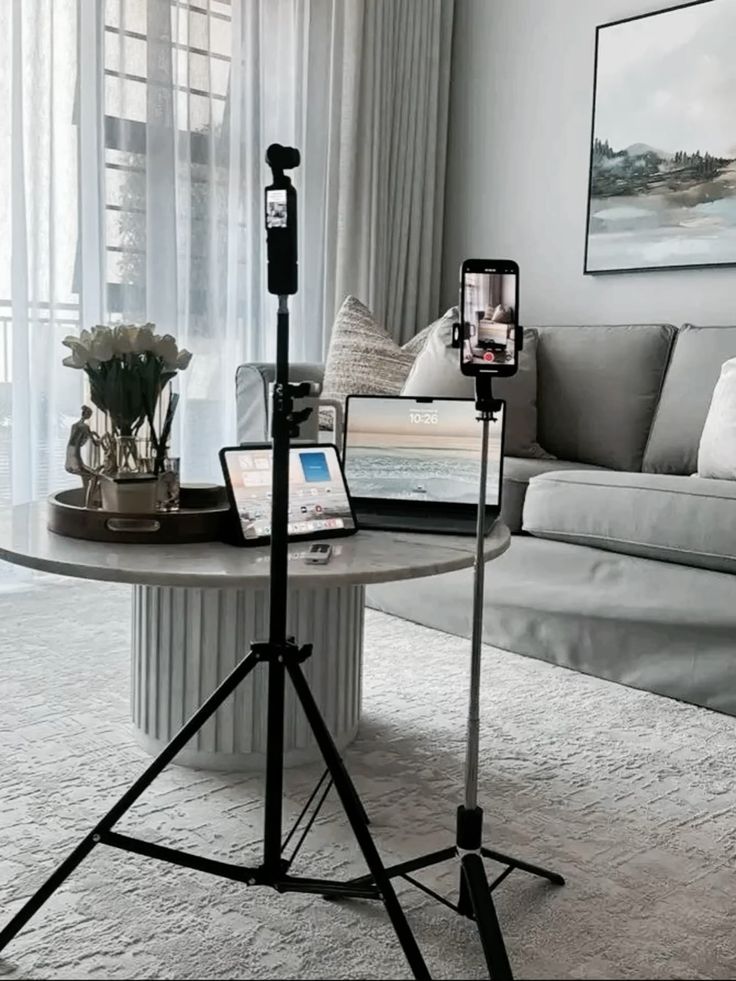Technology is woven into almost every part of your day. You rely on it to communicate, stay organized, and even manage tasks around the home with ease. Learning about the right technologies can help you make daily routines more convenient and efficient.
Whether you’re working, relaxing, or taking care of your family, understanding which tools can simplify your life is valuable. With so many innovations available, it’s easier than ever to find solutions that suit your needs.


1) Smart thermostats like Nest for automated home temperature control
Smart thermostats make it simple to manage your home’s heating and cooling. With brands like Nest, you can adjust the temperature from your phone or through voice commands. This remote control means you don’t need to get up to change the settings.
Many smart thermostats learn your patterns over time. If you often leave for work at a certain hour, the thermostat can automatically adjust to save energy while you’re out. When you return, your home can be set to your favorite comfort level without manual input.
Some models can connect with smart home platforms such as Google Home or Amazon Alexa. This brings even more convenience, as you can use routines or voice shortcuts. If you forget to turn down the heat before a trip, just open the app and change it from anywhere.
Energy reports offered by certain smart thermostats let you see how much heating or cooling you’re using. This can help you make choices that reduce your energy use and possibly lower your utility bills. Setting a schedule or using energy-saving modes can add up over time.


2) Robot vacuum cleaners such as Roomba for effortless floor cleaning
Robot vacuum cleaners like Roomba have changed the way you clean your floors. With automatic navigation, these devices can move around your home and pick up dirt and debris on their own.
You no longer need to spend time pushing a traditional vacuum. Many models can be scheduled to run while you’re out, so you return to clean floors with minimal effort.
Some robot vacuum cleaners offer features such as self-emptying dust bins and smart mapping. This means less manual intervention and more efficient cleaning, even around furniture or in hard-to-reach corners.
Models like the Roomba i3+ can empty their contents automatically, further reducing the amount of hands-on maintenance you need to do. They work well on both hard floors and carpets.
If you have pets, certain robot vacuums are especially effective at picking up pet hair. With WiFi connectivity, you can even control some models using your phone or a voice assistant, making floor cleaning even more convenient.


3) Wearable fitness trackers like Fitbit to monitor health and activity
Wearable fitness trackers, such as Fitbit, help you keep an eye on your daily activity and health without much effort. By wearing one on your wrist, you can automatically track steps, heart rate, calories burned, and more.
These devices also monitor your sleep patterns, letting you see how much rest you’re actually getting. Many models will even remind you to move if you’ve been sitting for too long.
Some trackers offer features like GPS, stress tracking, and notifications from your phone. The companion apps provide easy-to-read summaries of your progress, so you can check trends and set new goals.
With a fitness tracker, you don’t need to guess how active you’ve been. Everything is recorded and available to review, making it easier to make small but meaningful changes to your daily routine.
Whether you’re new to fitness or just want to keep a closer watch on your health, wearable trackers give you helpful data right on your wrist. This kind of technology makes it simple to stay motivated and stay on track.


4) Voice assistants like Amazon Echo to simplify daily tasks
Voice assistants such as Amazon Echo, Google Home, and Apple HomePod are designed to help you manage everyday tasks using simple voice commands. You can set reminders, create shopping lists, check the news, or play music without lifting a finger.
These devices are useful for hands-free control of smart home gadgets, like adjusting lights or setting the thermostat. You can also ask questions, get weather updates, or manage your calendar, making your daily routine more organized.
Setting up routines lets you automate several actions with a single command. For example, you might say “good morning” to have your voice assistant turn on lights, read the news, and tell you about any upcoming meetings.
If you have limited mobility or just want added convenience, voice assistants provide quick access to information and home controls. With continued updates, they are becoming more intuitive and supportive of your needs.


5) Smart security systems like Ring for enhanced home safety
Smart security systems, such as Ring, make it simple to monitor your home wherever you are. With an app on your phone, you can check live video feeds, receive real-time alerts, and interact through two-way audio. This helps you stay aware of what’s happening around your property, day or night.
You can customize features like motion detection so you get notifications only when something important happens. Integration with other smart devices, like door locks and lights, lets you manage different aspects of your home’s security from a single place.
Many systems allow you to add multiple cameras, doorbell cameras, and sensors for doors and windows. This flexibility means you can secure your home according to your specific needs.
Some setups even support voice assistants, making it convenient to control your security system by just speaking. Advanced options now use AI to identify potential risks or distinguish between familiar faces and strangers.
Smart security systems are designed to make you feel more secure and connected, offering useful features without being complicated to use. This technology provides peace of mind and puts greater control in your hands.


6) Meal kit delivery services like HelloFresh to ease cooking
If cooking after a long day feels overwhelming, meal kit delivery services can help simplify your routine. Brands like HelloFresh, Home Chef, and Blue Apron deliver fresh ingredients with easy-to-follow recipes straight to your door.
You can choose from a variety of meal options to match your dietary needs and preferences. Whether you are looking for vegetarian meals or quick recipes, there’s likely a box for you.
Meal kits are designed to save you shopping time. You don’t need to worry about missing ingredients or long grocery lists.
Each box usually comes with pre-portioned items, so you can cook meals without waste. This makes cleanup faster and reduces stress around meal planning.
Using a meal kit can also help you discover new dishes and flavors in your own kitchen. It’s a practical way to add variety to what you eat without extra effort.
If you’re new to cooking, the simple instructions can boost your confidence. The process is straightforward, making it easier for anyone to prepare a home-cooked meal.


How Modern Technologies Enhance Daily Routines
New technologies help you save time, reduce effort, and get more done with less stress. By integrating smart devices and automation into daily life, you can manage tasks more efficiently and focus on what matters most.
Streamlining Everyday Tasks
Smart home devices like robotic vacuums and voice assistants simplify chores and daily management. With a few taps or voice commands, you can set reminders, control appliances, and automate lighting or climate control at home.
Online grocery shopping and delivery apps eliminate the need to spend hours at the store. You can create shopping lists, compare prices, and get items delivered straight to your door.
For handling finances, online banking and automated bill pay services reduce paperwork and make money management faster. You can schedule payments and track expenses from your phone or computer, giving you more control over your budget.
Boosting Personal Productivity
You can use digital calendars and to-do list apps to plan your day, set goals, and never miss important events. These tools send reminders, track deadlines, and keep your schedule organized.
Cloud storage and collaboration platforms like Google Drive or Microsoft OneDrive let you access your files from anywhere and work with others in real time. This flexibility is especially helpful for balancing work and personal commitments.
Productivity apps offer features like focus timers, note-taking, and habit tracking to help you minimize distractions and get more done. Many provide reports or visual summaries so you can monitor progress and adjust your routines as needed.
Overcoming Common Challenges With Innovative Solutions
Modern technology can help you solve everyday problems in practical ways. Whether you want to communicate more easily or support independence, specific innovations make these goals more reachable.
Improving Communication and Connectivity
Staying connected is easier than ever. Smartphones, messaging apps, and video calls let you talk with friends, family, or coworkers—no matter where you are. These tools make remote work straightforward and keep your personal relationships strong.
Video conferencing platforms such as Zoom or Microsoft Teams help you join meetings from home or on the go. Group chats and collaboration tools like Slack or WhatsApp let you share updates quickly and organize projects without confusion.
If you travel, translation apps can remove language barriers and help you ask for directions or order food. High-speed internet and Wi-Fi hotspots make sure you have access to information or can contact someone in emergencies. These innovations create a more connected and responsive world.
Supporting Accessibility and Independence
Technology now plays a big role in making daily life easier for people with disabilities and older adults. Screen readers, voice-activated assistants, and real-time captioning software enable you to communicate and access information more independently.
Smart home devices, such as automated lighting and door locks, mean you can control your environment from a phone or by voice. Wheelchair-friendly navigation apps offer accessible routes, while e-readers with adjustable fonts make reading more comfortable if you have visual impairments.
Wearable tech, like smartwatches, can monitor your health or send alerts to caregivers. These solutions support your independence and help reduce the need for constant assistance, making daily tasks and safety more manageable.






